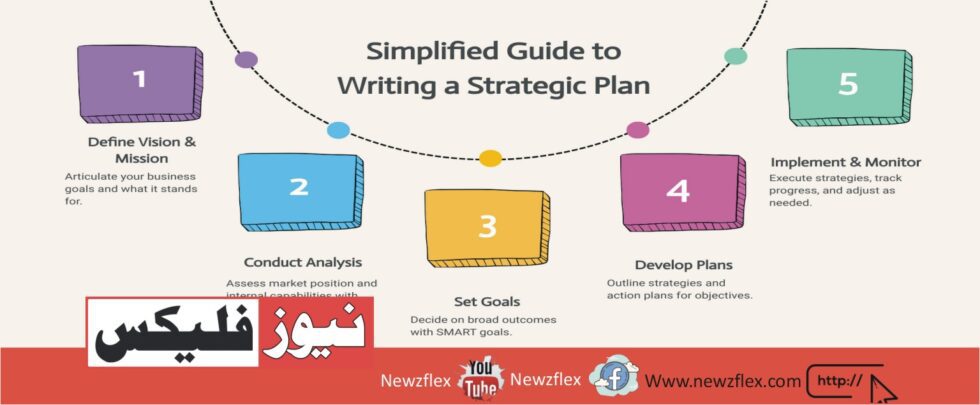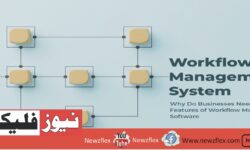
You’re faced with setbacks in a competitive market. How do you prioritize tasks for quick decision-making?
Setbacks are a part of any business journey, especially in a competitive market. But when challenges hit hard and fast, how do you respond?
The hidden truth is, that many businesses get stuck in analysis paralysis. They focus too much on planning and not enough on acting. Yet, in a fast-paced environment, quick decisions can make or break your momentum.
So, how do you prioritize tasks when every minute counts? How do you make decisions swiftly without losing sight of what truly matters?
Let’s challenge the norms and rethink how we deal with setbacks.
Stop Trying to Do Everything
Here’s the first mistake: trying to fix everything at once. Setbacks can be overwhelming. It feels like you need to solve multiple problems immediately.
But spreading your focus across too many tasks only leads to burnout. Instead, zoom in on the one thing that will make the biggest impact right now.
This is where the real challenge lies. How do you decide what to focus on?
Identify the Root Cause
It’s easy to get distracted by surface-level problems. Sales are down. Customers are complaining. Competition is ahead. But these are symptoms, not the root cause.
To make a quick and effective decision, dig deeper. What’s causing the setback? Are internal processes slowing you down? Is the market shifting faster than you can keep up?
Ask yourself: What’s the one thing that, if solved, would fix multiple issues at once?
Once you identify the root problem, everything else becomes secondary.
Impact vs. Urgency
After finding the root cause, assess each task based on two factors: impact and urgency. Tasks with high impact and high urgency should be at the top of your list. These are the actions that will directly address the setback and need immediate attention.
High urgency but low impact? Delegate or automate. High impact but low urgency? Schedule it for later. By categorizing tasks this way, you focus only on what matters most and leave the rest for another time.
Don’t Overthink the Data
Here’s another hidden truth: data can slow you down. Businesses today are flooded with metrics and analytics, but sometimes too much information becomes a burden.
Quick decisions don’t require perfect data. They require insight and intuition. Trust your gut when time is tight. The data can help guide you, but don’t let it rule every decision.
Sometimes, it’s better to act on imperfect information than to wait for a complete picture.
Get the Right People Involved
Another overlooked aspect of decision-making is knowing who should be involved. You don’t need everyone’s input. This only slows things down.
But you also can’t go it alone. Bring in people who understand the problem best. Get perspectives that challenge your assumptions but don’t delay the decision by including too many voices.
Quick decision-making thrives on small, effective teams.
Accept that Mistakes Will Happen
Fast decisions come with risks. You won’t always get it right. But here’s the secret: mistakes are better than inaction. When setbacks occur, standing still is the worst option.
Quick action gives you momentum, and even if you make a mistake, you’re still moving forward. The key is to learn quickly. If a decision turns out wrong, pivot fast. This is how the most competitive businesses stay ahead.
Challenge the Fear of Failure
Fear of making the wrong choice often holds businesses back. But let’s rethink failure. Setbacks and mistakes are opportunities to adapt. In a competitive market, it’s not about avoiding failure but learning from it faster than your competitors.
So, ask yourself: What’s holding you back from making a decision? Is it the fear of being wrong?
Let go of that fear and focus on making the best decision you can with the information you have.
Leverage Technology, but Don’t Depend on It
In today’s market, technology is a double-edged sword. It helps you move fast, but it can also slow you down with unnecessary complexity.
Use tools that speed up decision-making, but don’t depend entirely on tech solutions. Remember, technology should assist your thinking, not replace it.
The human element of intuition, experience, and judgment remains critical.
The Bottom Line
In a competitive market, setbacks are inevitable. But how you prioritize and act defines whether your business will recover or fall behind. Don’t try to fix everything.
Identify the root cause, focus on high-impact tasks, and involve the right people. Don’t be paralyzed by data or the fear of mistakes. Move forward, adapt quickly, and learn fast.
When faced with setbacks, remember: that quick decision-making is a skill that can be developed. It’s about knowing what matters most and acting on it with confidence.
For more insights on thriving in competitive markets, visit www.newzflex.com.
آپ کو مسابقتی مارکیٹ میں ناکامیوں کا سامنا ہے۔ فوری فیصلہ سازی کے لیے آپ کاموں کو کس طرح ترجیح دیتے ہیں؟
دھچکے کسی بھی کاروباری سفر کا حصہ ہوتے ہیں، خاص طور پر مسابقتی بازار میں۔ لیکن جب چیلنجز سخت اور تیزی سے ٹکراتے ہیں، تو آپ کیسے جواب دیتے ہیں؟ چھپی ہوئی سچائی یہ ہے کہ بہت سے کاروبار تجزیے کے فالج میں پھنس جاتے ہیں۔
وہ منصوبہ بندی پر بہت زیادہ توجہ دیتے ہیں اور اداکاری پر کافی نہیں۔ پھر بھی، تیز رفتار ماحول میں، فوری فیصلے آپ کی رفتار کو توڑ سکتے ہیں یا توڑ سکتے ہیں۔ تو، جب ہر منٹ کا شمار ہوتا ہے تو آپ کاموں کو کس طرح ترجیح دیتے ہیں؟
آپ واقعی اہم چیزوں کو نظر انداز کیے بغیر کس طرح تیزی سے فیصلے کرتے ہیں؟آئیے اصولوں کو چیلنج کریں اور دوبارہ سوچیں کہ ہم ناکامیوں سے کیسے نمٹتے ہیں۔
سب کچھ کرنے کی کوشش کرنا بند کریں۔
یہاں پہلی غلطی ہے: سب کچھ ایک ساتھ ٹھیک کرنے کی کوشش۔ ناکامیاں بہت زیادہ ہوسکتی ہیں۔ ایسا لگتا ہے کہ آپ کو فوری طور پر متعدد مسائل کو حل کرنے کی ضرورت ہے۔
لیکن آپ کی توجہ کو بہت سارے کاموں میں پھیلانا صرف برن آؤٹ کا باعث بنتا ہے۔ اس کے بجائے، ایک چیز پر زوم ان کریں جو اس وقت سب سے زیادہ اثر ڈالے گی۔
اصل چیلنج یہیں پر ہے۔ آپ کیسے فیصلہ کرتے ہیں کہ کس چیز پر فوکس کرنا ہے؟
جڑ کی شناخت کریں۔
سطحی سطح کے مسائل سے مشغول ہونا آسان ہے۔ فروخت کم ہے۔ صارفین شکایت کر رہے ہیں۔ مقابلہ آگے ہے۔ لیکن یہ علامات ہیں، بنیادی وجہ نہیں۔
فوری اور مؤثر فیصلہ کرنے کے لیے، گہرائی میں کھدائی کریں۔ جھٹکا کا سبب کیا ہے؟ کیا اندرونی عمل آپ کو سست کر رہے ہیں؟ کیا مارکیٹ اس سے زیادہ تیزی سے بدل رہی ہے جتنا آپ برقرار رکھ سکتے ہیں؟
اپنے آپ سے پوچھیں: وہ کون سی چیز ہے جو اگر حل ہو جائے تو ایک ہی وقت میں متعدد مسائل کو حل کر دے گی؟
ایک بار جب آپ بنیادی مسئلے کی نشاندہی کر لیتے ہیں، تو باقی سب کچھ ثانوی ہو جاتا ہے۔
اثر بمقابلہ فوری
اصل وجہ تلاش کرنے کے بعد، دو عوامل کی بنیاد پر ہر کام کا اندازہ لگائیں: اثر اور عجلت۔ زیادہ اثر اور اعلی عجلت کے ساتھ کام آپ کی فہرست میں سب سے اوپر ہونے چاہئیں۔ یہ وہ اقدامات ہیں جو براہ راست دھچکے کا ازالہ کریں گے اور ان پر فوری توجہ کی ضرورت ہے۔
اعلی عجلت لیکن کم اثر؟ ڈیلیگیٹ یا خودکار۔ زیادہ اثر لیکن کم عجلت؟ اسے بعد میں شیڈول کریں۔ اس طرح کاموں کی درجہ بندی کرکے، آپ صرف ان چیزوں پر توجہ مرکوز کرتے ہیں جو سب سے اہم ہے اور باقی کو کسی اور وقت کے لیے چھوڑ دیتے ہیں۔
ڈیٹا کو زیادہ مت سوچیں۔
یہاں ایک اور پوشیدہ سچائی ہے: ڈیٹا آپ کو سست کر سکتا ہے۔ آج کاروبار میٹرکس اور تجزیات سے بھرے ہوئے ہیں، لیکن بعض اوقات بہت زیادہ معلومات بوجھ بن جاتی ہیں۔
فوری فیصلوں کے لیے کامل ڈیٹا کی ضرورت نہیں ہوتی۔ انہیں بصیرت اور بصیرت کی ضرورت ہوتی ہے۔ جب وقت تنگ ہو تو اپنے آنتوں پر بھروسہ کریں۔ ڈیٹا آپ کی رہنمائی میں مدد کر سکتا ہے، لیکن اسے ہر فیصلے پر حکمرانی نہ ہونے دیں۔
کبھی کبھی، مکمل تصویر کا انتظار کرنے سے بہتر ہے کہ نامکمل معلومات پر عمل کریں۔
صحیح لوگوں کو شامل کریں
فیصلہ سازی کا ایک اور نظر انداز شدہ پہلو یہ جاننا ہے کہ کس کو شامل ہونا چاہیے۔ آپ کو ہر کسی کے ان پٹ کی ضرورت نہیں ہے۔ یہ صرف چیزوں کو سست کرتا ہے۔ لیکن آپ اسے اکیلے بھی نہیں جا سکتے۔
ایسے لوگوں کو شامل کریں جو مسئلہ کو بہتر طور پر سمجھتے ہیں۔ ایسے نقطہ نظر حاصل کریں جو آپ کے مفروضوں کو چیلنج کرتے ہیں لیکن بہت زیادہ آوازیں شامل کر کے فیصلے میں تاخیر نہ کریں۔ فوری فیصلہ سازی چھوٹی، موثر ٹیموں پر پنپتی ہے۔
قبول کریں کہ غلطیاں ہوں گی
تیز فیصلے خطرات کے ساتھ آتے ہیں۔ آپ ہمیشہ اسے درست نہیں کریں گے۔ لیکن یہاں راز ہے: غلطیاں بے عملی سے بہتر ہیں۔ جب دھچکے لگتے ہیں، تو خاموش کھڑا رہنا سب سے برا آپشن ہوتا ہے۔
فوری عمل آپ کو رفتار دیتا ہے، اور اگر آپ غلطی کرتے ہیں، تب بھی آپ آگے بڑھ رہے ہیں۔ کلید جلدی سیکھنا ہے۔ اگر کوئی فیصلہ غلط نکلے تو تیزی سے محور کریں۔ اس طرح سب سے زیادہ مسابقتی کاروبار آگے رہتے ہیں۔
ناکامی کے خوف کو چیلنج کریں
غلط انتخاب کرنے کا خوف اکثر کاروبار کو روکتا ہے۔ لیکن آئیے ناکامی پر دوبارہ غور کریں۔ ناکامیاں اور غلطیاں موافقت کے مواقع ہیں۔ مسابقتی بازار میں، یہ ناکامی سے بچنے کے بارے میں نہیں ہے بلکہ اپنے حریفوں کے مقابلے میں اس سے تیزی سے سیکھنے کے بارے میں ہے۔
لہذا، اپنے آپ سے پوچھیں: آپ کو فیصلہ کرنے سے کیا چیز روک رہی ہے؟ کیا یہ غلط ہونے کا خوف ہے؟ اس خوف کو چھوڑ دیں اور اپنے پاس موجود معلومات کے ساتھ بہترین فیصلہ کرنے پر توجہ دیں۔
ٹیکنالوجی کا فائدہ اٹھائیں، لیکن اس پر انحصار نہ کریں
آج کی مارکیٹ میں، ٹیکنالوجی ایک دو دھاری تلوار ہے۔ یہ آپ کو تیزی سے آگے بڑھنے میں مدد کرتا ہے، لیکن یہ آپ کو غیر ضروری پیچیدگی کے ساتھ سست بھی کر سکتا ہے۔
ایسے ٹولز کا استعمال کریں جو فیصلہ سازی کو تیز کرتے ہیں، لیکن مکمل طور پر تکنیکی حل پر انحصار نہیں کرتے ہیں۔ یاد رکھیں، ٹیکنالوجی کو آپ کی سوچ کی مدد کرنی چاہیے، اسے تبدیل نہیں کرنا چاہیے۔ وجدان، تجربہ، اور فیصلے کا انسانی عنصر اہم رہتا ہے۔
باٹم لائن
مسابقتی مارکیٹ میں، ناکامیاں ناگزیر ہیں۔ لیکن آپ کس طرح ترجیح دیتے ہیں اور عمل کرتے ہیں اس بات کا تعین کرتا ہے کہ آیا آپ کا کاروبار بحال ہو گا یا پیچھے ہو جائے گا۔ ہر چیز کو ٹھیک کرنے کی کوشش نہ کریں۔ بنیادی وجہ کی نشاندہی کریں، زیادہ اثر انداز ہونے والے کاموں پر توجہ دیں، اور صحیح لوگوں کو شامل کریں۔
ڈیٹا یا غلطیوں کے خوف سے مفلوج نہ ہوں۔ آگے بڑھیں، تیزی سے موافقت کریں، اور تیزی سے سیکھیں۔ یہ جاننے کے بارے میں ہے کہ کون سی چیز سب سے اہم ہے اور اس پر اعتماد کے ساتھ عمل کریں۔








